Disclaimer: The following webinar contains sensitive content and was recorded during the COVID Pandemic. This may be triggering to some individuals. Please proceed at your own discretion.
Read Webinar Summary
Lower Face and Neck Lift Webinar Summary
Overview
This webinar presents a comprehensive guide to lower face and neck lift procedures, delivered by an experienced facial plastic surgeon from Marietta Facial Plastics, Laser & Aesthetics Center. The presenter, who previously served as chief of facial plastic surgery at Emory, draws from 25 years of surgical experience to educate viewers on surgical options for jawline and neck rejuvenation.
Key Concepts and Patient Selection
Common Concerns
The webinar addresses the prevalent concerns among individuals over 55 regarding softening of the neck and development of jowls. The choice between a facelift and direct neck lift depends on individual patient anatomy and specific goals.
Defining a Facelift
A facelift is defined as a surgical procedure encompassing lower face, jawline, and neck tightening. The presenter cautions against being overly focused on marketing terms like “mini lift” or “s-lift,” instead recommending focus on the actual results achieved by specific doctors using particular techniques.
Anatomy of Youthful Lower Face and Neck
The ideal characteristics of a youthful lower face and neck include:
- Smooth skin
- Thin subcutaneous fat layer (dependent on body weight)
- Well-defined jawline
- Adequate chin projection
- Posterior larynx
- High hyoid bone
- No platysmal bands
- Minimal submandibular gland ptosis
Surgical Technique: Extended SMAS Facelift
Approach
The presenter’s preferred technique is an extended SMAS (superficial musculoaponeurotic system) facelift, which involves extensive sub-SMAS dissection to lift and redrape deeper facial tissues for a natural appearance.
Objectives
This technique aims to:
- Tighten the jawline and neck
- Reduce marionette folds
- Restore volume to the lateral cheek
Surgical Details
- Incision placement: Carefully hidden in temple hair and around the ear to minimize visible scarring
- Procedure components: Contouring neck fat, tightening neck muscles (platysma), and elevating the entire skin envelope of the neck
- SMAS handling: The SMAS is lifted separately, with cheek skin draped more posteriorly than superiorly to avoid distortion
- Nerve protection: Emphasis on protecting the facial nerve using a blunt spatulated elevator technique for safe tissue separation
- Closure technique: Minimizing tension on skin during closure to promote optimal scar healing
Surgical Logistics
Procedure Details
- Location: Performed under general anesthesia at Marietta Surgical Center
- Duration: Approximately four hours
- Team: Utilizes the same team of anesthesiologists throughout the surgeon’s career
- Aftercare: Requires an overnight care assistant
Recovery Timeline
- Initial support: Chin support strap worn for first 10 days, then nightly for two weeks
- Suture removal: 10–14 days post-surgery
- Activity progression: Walking and light activity encouraged early, with full activity resuming after six weeks
Complementary Treatments
Adjunctive Procedures
The webinar discusses the strategic use of:
- Injectable fillers: To address volume loss
- CO2 laser treatments: For skin texture improvement
- Laser timing: Generally performed around mouth or eyes simultaneously with lift, but cheeks are lasered at a later date
Chin Enhancement
The presenter emphasizes the importance of chin implants in enhancing facelift results, particularly for patients with weak chins.
Case Studies and Results
The webinar features numerous before-and-after photos of patients who underwent extended SMAS facelifts, demonstrating the technique’s effectiveness across various facial anatomies and desired outcomes.
Conclusion
The presenter concludes by emphasizing that the ultimate goal is achieving natural, beautiful, and confident results for each patient through careful planning and customized treatment approaches. The webinar serves as both an educational resource for understanding facial rejuvenation options and a demonstration of the surgeon’s comprehensive approach to lower face and neck enhancement.
Face Lift
Dr. Yellin is widely recognized as an expert in aesthetic facial contouring and cosmetic neck rejuvenation procedures. Dr. Yellin performs a face lift or cervicofacial rhytidectomy using a modified deep-plane SMAS technique. In his hands, this provides a very natural appearance while it lifts and tightens the lower face and neck.
The Face Lift Procedure
The procedure begins with an incision under the chin through which the skin of the neck is elevated, followed by fat sculpting and midline neck muscle tightening, which is critical to optimizing jawline definition and the final neck contour. Once this incision is closed, an incision is made that follows the contours of the ear and the posterior hairline. The incision is hidden behind the tragus, thus eliminating a visible scar in front of the ear. The skin of the temple and cheek are elevated, and then the deeper tissues of the cheek known as the SMAS fascia, which envelops the facial muscles, are elevated and lifted. With the deeper SMAS fascia secured to tighten the jawline, the excess skin of the cheek and neck are removed, and the incisions are closed in a meticulous fashion using fine sutures. No drains or surgical staples are used. Because the deeper tissues are tightened, the skin can be closed with minimal tension, resulting in a more favorable scar and a natural, smooth facial contour; never a ” pulled look.” The final scar is well hidden within the contours of the ear and the hairline. Post-operatively, you are cared for by a care-provider the first night. You must wear an elastic support 22 hours a day, removing it only for meals and a shower, for 1 week and then sleep in it only for 2 additional weeks.
It is crucial to understand the indications, goals and limitations of a face lift before undergoing the procedure. Many factors can affect results, such as a history of smoking, diabetes, peripheral vascular disease, auto-immune disease, collagen vascular disease or other diseases known to affect healing, skin type, an individual’s skin elasticity, bone structure, dental support and the degree and quality of scar formation. All of this will be discussed during your consultation.
Before & After Photos
*All photos shown are patients of Dr. Yellin and are the property of Marietta Facial Plastic Surgery, Laser & Aesthetics Center. Individual results may vary. Please see full disclaimer.
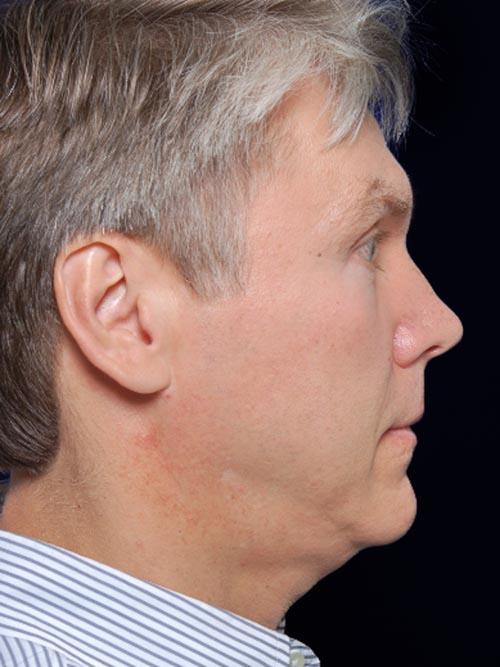
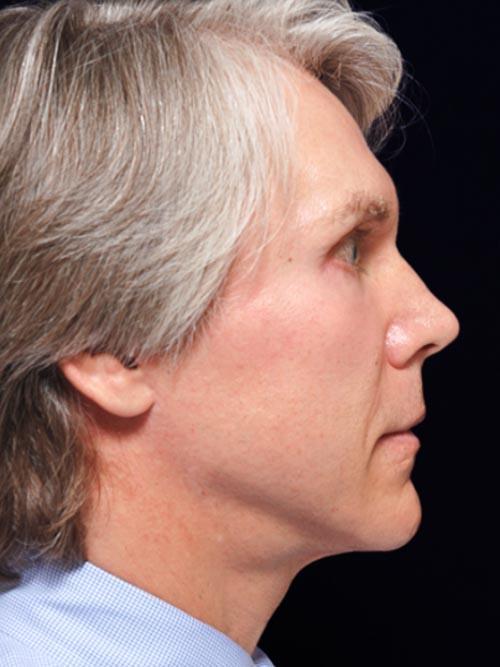
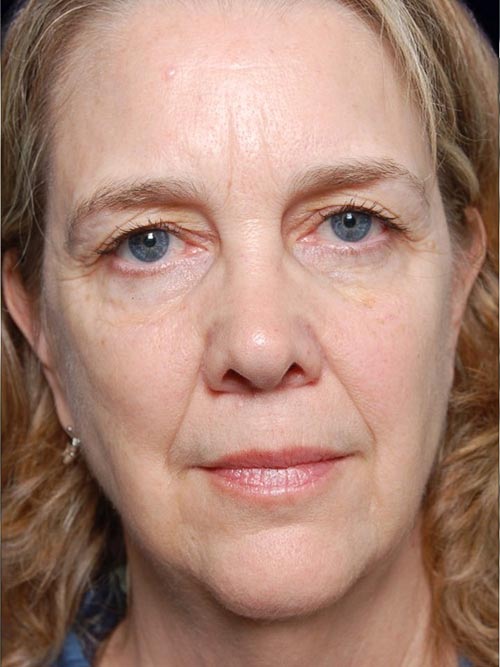
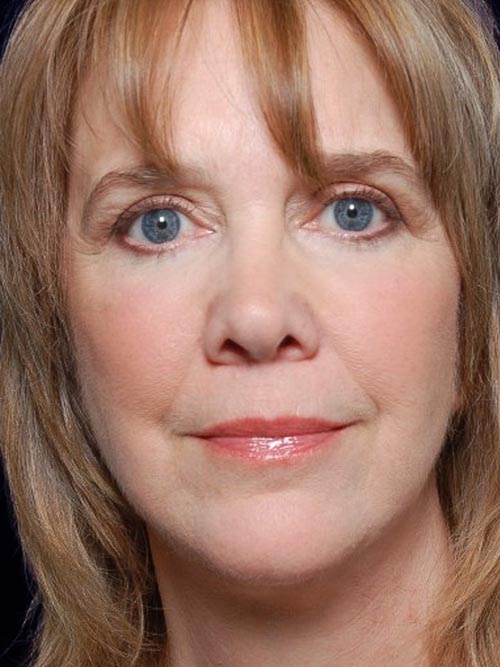
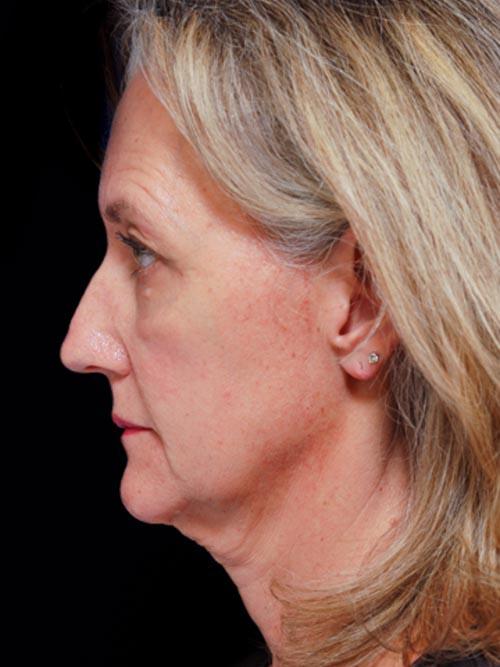
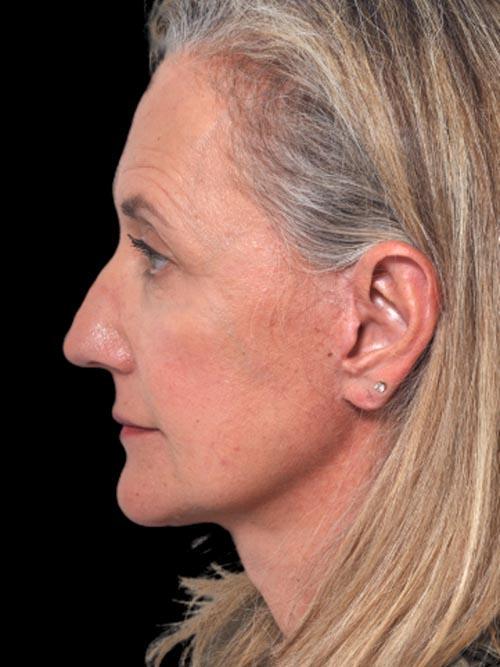
All photographs and other material presented on this website are the property of Dr. Yellin. Please do not download or reproduce the images without the express written consent of Dr. Yellin.
Disclaimer: Individual results may vary. No guarantee of results, stated or implied by any photo or statement on this website can be made. Please see full disclaimer.
Personalized Care Tailored to Your Unique Needs
At Marietta Facial Plastics, we understand that every face lift journey is unique. Our dedicated team takes the time to listen to your individual goals and concerns, ensuring that your treatment plan is customized to achieve the most natural and harmonious results. From your initial consultation through the entire recovery process, we provide continuous support and expert guidance to make your experience as comfortable and successful as possible. Our state-of-the-art techniques and compassionate approach ensure that you not only look rejuvenated but also feel confident and satisfied with your transformation. Trust us to enhance your appearance with precision, artistry, and a personalized touch that prioritizes your well-being every step of the way.
Atlanta & Marietta Face Lift Surgeons
Since 1996, Marietta Facial Plastic Surgery, Laser & Aesthetics Center has established itself as a leading provider of face lifts. We are pleased to serve patients throughout Atlanta, Marietta, Acworth, Woodstock, and from all over the country. To schedule your consultation or to request more information, please fill out the form below or call us at (770) 425-7575.
FAQs
What aesthetic concerns does a face lift address?
A facelift targets sagging cheeks, deep nasolabial folds, jowls, and loose skin beneath the chin. By repositioning underlying muscle layers and redraping skin with gentle tension, it restores crisp cheek-jaw contours and a smoother neck transition. The goal is to refresh natural facial proportions so attention returns to the eyes and smile rather than drift toward lax lower-face tissues.
How does a face lift differ from a mini-lift?
A comprehensive facelift repositions deeper tissues across the cheeks, jawline, and upper neck, offering broader structural change. A mini-lift limits dissection to a shorter zone, ideal for early jowls or mild laxity. Both aim for harmony; selection depends on skin quality, ligament strength, and the degree of correction needed, not strictly on age.
Is a face lift only for older individuals?
Genetics, sun exposure, and weight shifts can produce noticeable sagging well before traditional “senior” years. Candidacy is based on visible descent and skin laxity rather than birthdate. When drooping tissues become the dominant aging sign and injectables no longer camouflage it, a facelift may offer the most natural, enduring refinement—whether you’re in your 40s or later.
Can a face lift improve the neck and jowls?
Yes. Modern techniques often extend beneath the jawline, tightening the platysma muscle and resuspending deeper structures that create jowls. Integrating lower-face and upper-neck support in one vector smooths vertical neck bands and sharpens the chin–neck angle, yielding a cohesive profile instead of treating each zone separately.
How does skin quality affect face lift planning?
Elasticity, thickness, and sun damage guide incision length, tissue trimming, and any adjunct resurfacing. Firm, healthy skin molds smoothly over lifted contours, while photo-damaged skin may benefit from conservative excision and complementary treatments—such as gentle laser resurfacing—to refine texture and tone for an even result.
Will a face lift make me look unnatural?
When deep tissues are lifted along anatomical vectors and redundant skin is conservatively trimmed, the result appears rested, not “pulled.” Preserving hairline and ear position plus respecting normal facial movement keeps expressions authentic. Friends usually comment on freshness rather than suspecting surgery because personal character and spontaneity remain intact.
What is the role of the SMAS in modern face lifts?
The superficial musculoaponeurotic system (SMAS) is a fibromuscular layer that supports facial fat and expression muscles. Elevating and securing this layer, rather than relying on surface skin tension, produces durable lift and avoids an over-tightened appearance. Proper SMAS repositioning distributes weight evenly, helping results last longer and look more natural.
How is facial fat managed during a face lift?
Aging can create both deflation and bulges. Strategic liposculpture slims heaviness under the chin, while micro-fat grafting restores fullness to hollow cheeks or temples. Balancing subtraction and addition lets redraped skin lie smoothly over well-contoured soft tissue, recreating youthful curves and highlights without excess puffiness.
How are incisions placed to keep scars discreet?
Incisions trace natural creases: they begin in the hairline above the ear, follow the tragus, circle behind the earlobe, and taper into posterior hair. These paths hide edges within shadows and hair coverage. Tension-free closure and diligent sun protection help scars fade into faint lines that blend with surrounding skin.
Does a face lift address fine wrinkles?
Lifting repositions sagging tissues but only partially smooths etched surface lines. Fine wrinkles from sun damage or repetitive motion often remain. Light laser resurfacing, chemical peels, or neuromodulators can complement surgery by refining skin texture and softening dynamic creases without depending solely on surgical tension.
How long after major weight loss should someone consider a face lift?
Stable weight is key. Fluctuations can re-loosen tightened tissues or create hollows where excess once existed. Waiting until weight has plateaued—and skin and metabolism have adjusted—helps ensure that lifted contours remain calibrated to a consistent silhouette, maximizing the longevity of surgical refinement.
What lifestyle choices help maintain face lift results?
Daily broad-spectrum sunscreen, a balanced diet rich in antioxidants, and consistent hydration preserve collagen and elasticity. Avoiding nicotine, moderating alcohol, and keeping weight steady reduce strain on skin and ligaments. Gentle skincare—retinoids, peptides, and mild exfoliation—maintains surface clarity, supporting the deeper structural improvements for years.
What is a deep-plane face lift?
A deep-plane technique releases retaining ligaments beneath the SMAS and cheek fat pad, then elevates skin, muscle, and fat as one unit. This can soften pronounced nasolabial folds and maintain robust blood supply, potentially yielding exceptionally smooth cheek–mouth transitions and long-lasting support. Technique choice depends on anatomy and surgeon expertise.
What are common misconceptions about face lifts?
Many think a facelift corrects the entire face, yet it primarily addresses lower-face descent. Others fear a “windswept” look, unaware that modern SMAS or deep-plane lifts move tissues upward, not backward. Non-surgical devices are sometimes believed to equal surgical durability, but they generally provide incremental tightening rather than true structural repositioning.
How is facial symmetry addressed during a face lift?
Subtle left-right differences in ligament laxity, fat volume, and muscle tone are typical. Surgeons adjust suture placement, selective fat removal, or grafting on each side to balance these discrepancies. The aim is harmonious proportion rather than perfect mirror images—maintaining individuality while achieving overall visual balance.
Why is surgeon experience critical for face lift success?
Anatomical depth, nerve pathways, and skin behavior vary widely. Experienced surgeons refine judgment through repetition, recognizing nuanced landmarks and how tissues respond to release and suspension. Their expertise reduces risk, ensures natural vector selection, and helps results remain durable and authentic-looking as the face continues to mature.
Can non-surgical treatments replace a face lift?
Injectables, thread lifts, and energy-based devices can plump or mildly tighten skin, extending the time before surgery is needed. However, when ligament laxity causes pronounced jowls or neck droop, only surgical repositioning can restore crisp contours. Non-surgical methods remain valuable for early maintenance or fine-tuning after surgical healing.
What qualities make someone a good face lift candidate?
Candidates share visible lower-face laxity, general health that supports anesthesia and healing, and realistic expectations centered on refinement rather than radical change. Commitment to after-care guidelines, healthy lifestyle habits, and an understanding that surgery sets the clock back—without stopping it—also shape success and long-term satisfaction.
